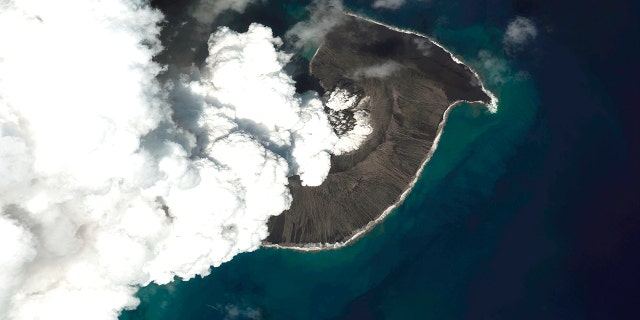A massive undersea volcano that erupted in Tonga last year reportedly disrupted satellite signals halfway around the world.
Since then, an international team of researchers has used satellite- and ground-based observations of the ionized part of the Earth’s upper atmosphere, or the ionosphere, to demonstrate that an air pressure wave triggered by volcanic eruptions could produce an “equatorial plasma bubble,” a hole that formed In the equatorial areas of the ionosphere, that severely disrupts satellite-based communications.
An equatorial plasma bubble, or EPB, can delay radio waves as well as degrade the performance of GPS. Disruptions to the ionization of the ionosphere, where molecules and atoms are ionized by solar radiation, and subsequent creation of a density gradient of electrons can cause the formation of the EPB.
Japan’s Nagoya University noted in a news release that the area of the ionosphere with the highest concentration of ionized particles is called the F-region, which is located 150 to 800 kilometers above the surface of the Earth. The region plays a crucial role in long-distance radio communication.
The study authors used the Arase satellite to detect occurrences of EPBs, the Himawari-8 satellite to check the initial arrival of air pressure waves and ground-based ionospheric observations to track the motion of the ionosphere.
The university said it observed an irregular structure of the electron density across the equator that occurred following pressure waves generated by the eruption.
Furthermore, they found for the first time that ionospheric fluctuations started a few minutes to hours earlier than atmospheric pressure waves involved in the generation of plasma bubbles.
“Previous studies have shown that the formation of plasma bubbles at such high altitudes is a rare occurrence, making this a very unusual phenomenon,” designated assistant professor Atsuki Shinbori, who led the team, said in a statement. “We found that the EPB formed by this eruption reached space even beyond the ionosphere, suggesting that we should pay attention to the connection between the ionosphere and the cosmosphere when extreme natural phenomenon, such as the Tonga event, occur.”
Shinbori said that his team’s findings are significant also from a point of space weather and disaster prevention.

This satellite image provided by Maxar Technologies shows an overview of Hunga Tonga-Hunga Ha’apai volcano in Tonga Dec. 24, 2021. (Satellite image ©2022 Maxar Technologies via AP)
“In the case of a large-scale event, such as the Tonga volcano eruption, observations have shown that a hole in the ionosphere can form even under conditions that are considered unlikely to occur under normal circumstances. Such cases have not been incorporated into space weather forecast models,” he said. “This study will contribute to the prevention of satellite broadcasting and communication failures associated with ionospheric disturbances caused by earthquakes, volcanic eruptions and other events.”
The Associated Press contributed to this report.

